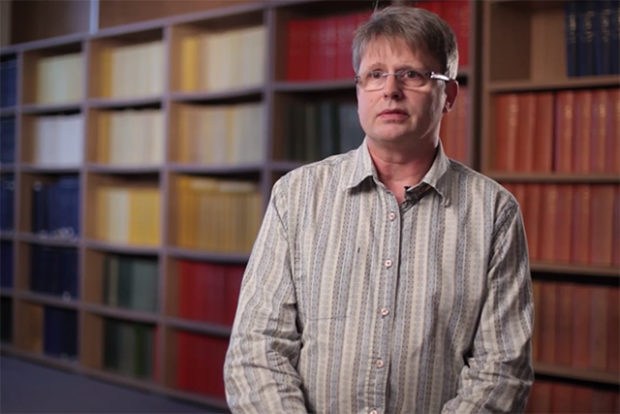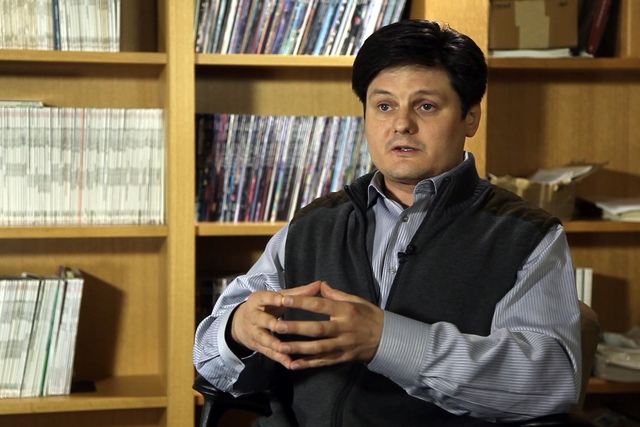Electrochemical Metamaterials
Chemical physicist Alexey Kornyshev on metamaterials, plasmonics and Raman scattering
videos | October 27, 2020
I’ll tell you about electrochemical metamaterials, which is actually an absolutely new term, not yet accustomed to, not yet established. Before understanding the idea of electrochemical metamaterial, you must understand what metamaterial is. A metamaterial is a material with some odd funky disruptive properties, properties that people didn’t have before that don’t come naturally as it is.
That is just one example. In principle, if we are talking about metamaterials, that may be not only optical metamaterials. It may be electromechanical metamaterials related to, for instance, robotics. They usually are not called metamaterials; they are called smart materials: the materials that can do some funny functions at your own will.
Why electrochemical? Electrochemistry is essentially a very old science which can be reduced to the following thing: you have an electrode and electrolyte, and when you polarize that electrode, you charge it, then there will be counter ions on the opposite side, the charged electrode will come there and build what’s called electrical double layer or space charge in front of it. And then your electric field, which is due to polarization of that electrode, will be localized in a very narrow space of the thickness of that double layer. Usually, this depends on the concentration of electrolytes, and it can be one nanometer or more. But then what is happening? Within one volt, you can have a field, which will be like a potential drop of one volt per nanometer. This is very difficult to create in physical systems: only recently, when people started to work with nanogaps, they were able to achieve such fields.
So what’s exciting about having such fields? In electrochemistry, there was nothing exciting; it was an everyday reality for them because they were using that potential, first of all, to drive electrochemical reactions. You polarize the electrodes; for instance, positive and negative ions come to the surface, and then they will take part in the electronic change; it will be what’s called the Faraday process or electrochemical reaction. That was one kind of application. Other kinds of applications are batteries or supercapacitors and many other things. So that was standard there.
But to use those abilities to dramatically change the properties of a material, whatever it is, that’s a new direction, a new turn on how electrochemistry can be used. We are accustomed to batteries, fuel cells or reactions of polishing of metals and all those applications. But it may actually have other applications as well.
Now, let me speak about photonic metamaterials, or even more narrowly, the so-called plasmonic metamaterials, because that’s how photonic metamaterials actually started. What is the science of plasmonics? When did it all start? It started a long time ago. It was approximately in the 1970s when people like Andreas Otto in Dusseldorf and Kretchmer suggested certain geometries of prisms that can focus light in such a way that by shining light on the metal surface, they can excite the so-called surface plasmon.
So, first of all, what is a plasmon? Plasmon is a collective excitation of electrons. It’s nothing very complicated for an expert to understand. What is metal? You have a skeleton of positive ions, and you have more or less free electrons, a sea of free electrons floating there, and this is why they conduct. When you apply voltage at the two sides of your piece of that metal, you will push those electrons in opposite directions of the field.
But plasmons are excitations when local electrons get kind of concentrated and then in another place depleted so that waves like an acoustic wave will propagate in that system. Of course, as with every wave, it has its own law of propagation, its frequencies related to its wave vector or momentum, and that is called dispersion relation. That dispersion relation for plasmon is such that you cannot directly excite it by shining light on it because you cannot satisfy both the conservation of energy and momentum. Those two people (maybe there were more, but these are the most brilliant examples) created these setups where they can break that kind of a relationship that you cannot excite them. They were able to excite plasmons and study those plasmons, the so-called phenomenon of attenuated total reflection: the light is shined, and it is not reflected in full because it excites a plasmon, and so you can see that plasmon.

Raman scattering was discovered a long time ago by Raman and Krishnan in India and by Mandelstam and Landsberg in the Soviet Union. But Raman and Krishnan did it in solutions; their probes on which this light is kind of scattered, they were in solutions, and Mandelstam and Landsberg did it on crystals; there was a vibration of the lattice, and you can see it there. There is a big difference in terms of applications: who really cares about those crystals? But in the case of Raman, that’s a whole world of chemistry. Why? Because water is not transparent in the infrared region, an infrared region corresponds to the vibrations of molecules, and all chemistry is about those vibrations of molecules. So if you cannot go and directly probe those vibrations, you lose quite a lot, but using Raman scattering, you can do it; you can go through a transparent window, then reflect through a transparent window, and the difference in frequency will probe this kind of difficult range of frequencies which are associated with chemistry.
The story was very sad for the Soviet side at that time because Raman got the Nobel Prize (they actually got it alone without Krishnan). I don’t know whether it’s true, but it’s a legend that he bought his ticket to Stockholm a year before the Nobel prize was announced because it was cheaper to half if you bought it earlier; you had to take a ship at that time. He really wanted it very much. For that reason, the Soviet Union people don’t use (or didn’t use at least) the term ‘Raman scattering’; they use ‘combination light scattering’, which was introduced by Landsberg and Mandelstam, but it didn’t go anywhere further like that one.
In order to show this effect, Raman had to use a very concentrated solution of those analytes he wanted to study like that because the signal, what people call the cross-section of the scattering, is very small, so they had to have a lot of that stuff there. Is it very interesting? For some applications, it may be interesting enough.
But what is very interesting to detect the fingerprints (the spectral lines of those molecules are always unique: they are their fingerprints, people call it Raman fingerprints of a molecule), so if you can detect a very small number of such molecules, in that case you will be able to detect the presence of the molecules we don’t want to be here, including gasses, poisons, any illegal substances, things like that.
The direct Raman effect as it was didn’t give that option, so what was discovered, the so-called surface-enhanced Raman effect means that where people saw a rough surface of metals, they saw a very large enhancement of that signal. It was first observed in Southampton by Martin Fleischmann and two of his colleagues, Hendra and McQuillan, and they misinterpreted that result: they thought it was because there was a lot of stuff on this rough surface. But later on, Van Duyne in the United States proved that if you measure that surface and calculate how much stuff you can absorb there, it will not work because enhancement was sometimes between 108-1012 orders of magnitude. Then he and many other scientists came up with the idea that this is an excitation of surface plasmons, and then in these gaps and cracks, there will be hotspots for electromagnetic radiation because Raman scattering goes as a force power of the electric field, electromagnetic radiation, and so if you enhance it for three orders of magnitude, you will get 109 orders of magnitude of Raman signal. That was in the 70s and 80s. I was at one conference with people discussing it till late midnight. What was the nature of that?
Then came a new era of nanotechnology. Nanotechnology of the 90s started with the fact that you can build a lot of structures with nano-resolution different architectures, and if you can build them, you must have an idea of what you are building them for and which kind of effect they will be giving you. One of them was to build to work, for instance, with nanoparticles. So if you have these nanoparticles in some proximity to each other, you fall light on it, then because there is a localized plasmon resonance, there is a resonance phenomenon, so you have a very high electric field in between. That’s called the hot spots. And then those hot spots, how can we use them? First of all, you can use them for the surface-enhanced Raman effect: if an analyte molecule gets in that hot spot, you can then detect an enhanced Raman signal of that.



























